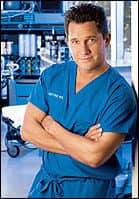By Dr Daniel B. Lensink, MD
While a traditional facelift provides the most comprehensive way to reverse the signs of facial aging, a QuickLift can address many of the same concerns. The QuickLift—a less-invasive facelift option—rejuvenates the mid-face, jawline, and neck areas, delivering results with minimal recovery time. While more limited in scope, your doctor can customize the surgery to your specific facial needs. Also, it readily accompanies other localized procedures, widening your options while offering an alternative to a full facelift. A QuickLift may satisfy busier individuals who expect results with minimal downtime.
What is a QuickLift?
The QuickLift, or S-lift facelift, uses a short, S-shaped incision which passes in front of and around the ear. Your surgeon will then lift tissues in the mid- and lower-face region and close the incision with purse-string sutures. The QuickLift provides immediate improvement to the mid-face, jawline, and neck areas, and produces a long-lasting result.
Patients seeking lower-risk options will also appreciate the QuickLift. Having a shorter incision means that, in most cases, you can have the surgery with local instead of general anesthesia, which decreases your risks of anesthesia-related complications. Further, since a QuickLift works with only the upper layers of skin, it does not have the nerve damage risks associated with “deep plane” facelifts.
A Fast Procedure for Busy People
Among its best features, the surgery takes very little time. Since the procedure uses a short incision, focuses on the mid- and lower-face areas, and does not work at the “deep plane” level, the surgery requires much less time to perform. In many cases, your doctor can complete your treatment within 2 hours. Its minimal time commitment makes it a rewarding option for those with localized concerns or very demanding schedules. This feature also means you can have other treatments performed in addition to your QuickLift during the same surgery visit, which also saves you time. Having multiple procedures simultaneously means fewer surgeries and less risk.
A Shorter Incision Means a Shorter Recovery
A traditional facelift uses a longer incision that extends into the scalp-line above the ear and circles behind the ear. This longer incision naturally requires a longer recovery time. By contrast, a QuickLift’s short incision reduces the amount of swelling and inflammation experienced during your recovery. As a result, you can return to work sooner and complete your recovery more quickly. Recovery from a short-incision facelift may take a couple of months—compared to as long as a year for a traditional facelift—and you can often return to work a few days after your surgery.
A Treatment That Works on Its Own or with Others
You can’t call a QuickLift a one-size-fits-all option, either. Your doctor can tailor your QuickLift to your anatomy and aesthetic needs as well as perform additional procedures simultaneously to augment additional areas. For example, during your QuickLift, your doctor can remove excess skin you have or perform liposuction to maximize your results. You can also schedule a QuickLift with other treatments to increase the scope of your rejuvenation. Many individuals elect to have a brow lift or blepharoplasty at the same time since a QuickLift will not improve those areas.
The QuickLift—an Effective Treatment for Today’s Busier Lifestyles
Men and women today have many ways to mitigate or reduce the signs of facial aging, with treatments ranging from invasive to noninvasive options. For those with the most time and resources, a full facelift will likely address the most issues and last the longest. The QuickLift, however, remedies many common facial concerns, has a shorter recovery, and produces results that last. Further, since you can combine the QuickLift with additional procedures, you can achieve significant improvements to your entire facial area without having a full facelift. The combination of these factors makes it among today’s most performed cosmetic surgeries and one you may want to consider.
Dr Daniel B. Lensink, MD, practices in Redding, Calif.




